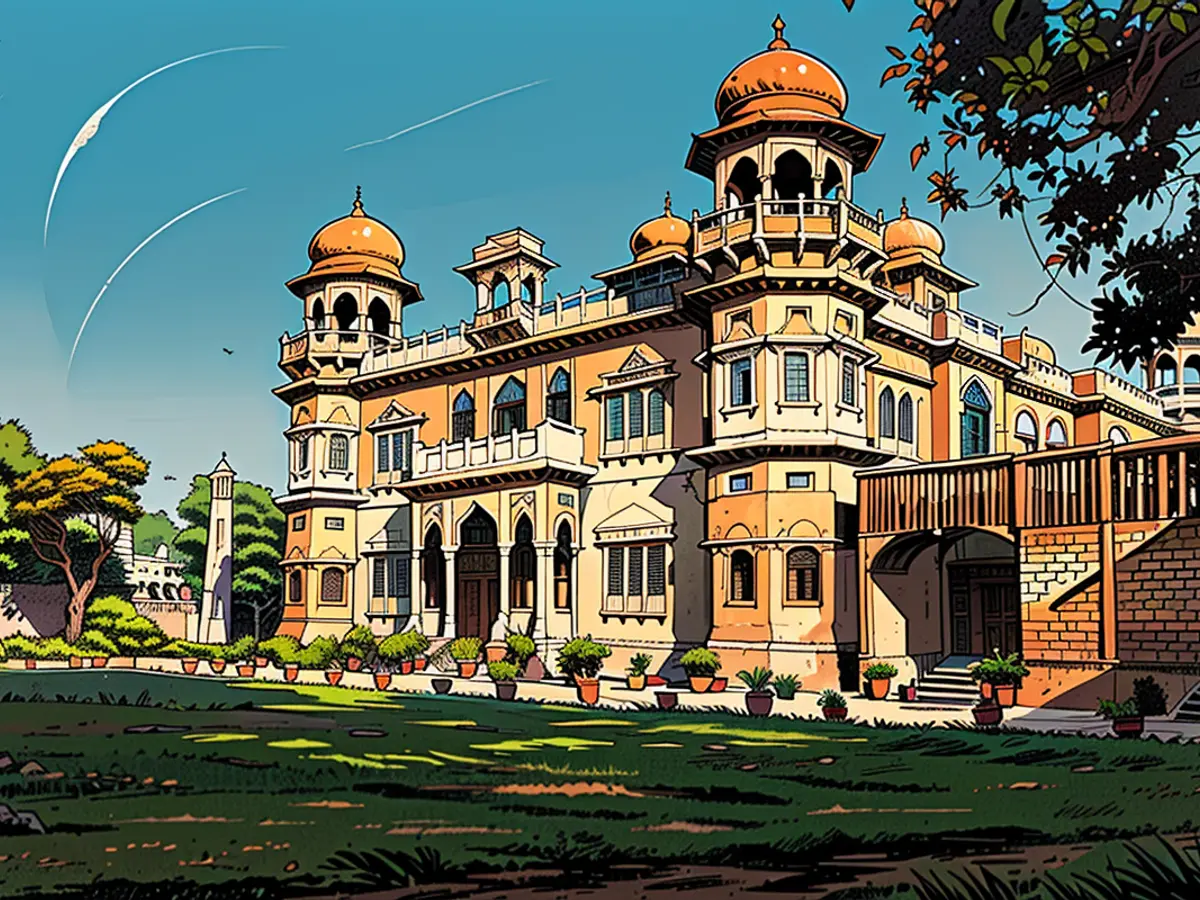Vibrant and peafowl-filled, potentially haunted: Pakistan's Mohatta Palace
The pink-hued balusters, domes, and parapets of this structure seem reminiscent of the northern Indian state of Rajasthan, serving as a reminder of a time when both Muslims and Hindus coexisted peacefully in the bustling port city.
However, the city's scarcity of land and relentless development pose a threat to its historical architectural gems. Demolition, encroachment, neglect, piecemeal conservation laws, and vandalism are merely a few of the factors contributing to the gradual deterioration of Karachi's historical landmarks.
The building's trustees successfully repelled an attempt to transform it into a dental college, but they continue to face a decades-long legal battle between the heirs of a previous owner seeking control over the land. Standing vacant for almost two decades, the palace officially opened as a museum in 1999, nestled in the upscale neighborhood of Old Clifton amidst luxury homes, businesses, and fine dining establishments.
According to palace lawyer Faisal Siddiqi, the land beneath such structures, including the Mohatta Palace, is highly coveted. "Greed trumps heritage," he aptly stated.
Karachi's population increases by approximately 2% per year, making it difficult for an already fragmented city to dedicate resources towards preserving its historical sites.
For most Pakistanis, the Mohatta Palace represents the closest encounter with the exquisite architectural marvels of Rajasthan, given the restrictions on travel and unforgiving bureaucracy.
The multicultural heritage of Karachi makes advocacy for preservation more challenging compared to cities such as Lahore, which shares a strong bond with the Muslim-ruled Mughal Empire.
"The large-scale community support required to drive government investment in preservation efforts is nearly impossible to amass in a city as socially divided as Karachi," stated Heba Hashmi, a heritage manager and maritime archaeologist.
The Mohatta Palace, constructed in the 1920s by Hindu entrepreneur Shivratan Mohatta as a coastal sanctuary for his ailing wife, draws in visitors with its distinctive pink stone, originating from Jodhpur in India. After partition in 1947, Mohatta left the palace, which was subsequently occupied by the Foreign Ministry.
Later, the palace was inherited by Pakistani political figure Fatima Jinnah, who passed away in 1967; her sister Shirin then assumed ownership until her death in 1980, leading to a court dispute over the property's ownership.
During this time, the vacant and neglected palace gained notoriety as a supposedly haunted building, fueling widespread rumors of supernatural activity.
One such individual who grew up hearing tales of the palace's ghostly residences was Nasreen Askari, now serving as director of the museum. "As a child, I was warned not to approach it; they said it was a 'bhoot (ghost) bungalow'," she recalled.
Visiting the palace, Tariq Ahmed appreciated its grand architecture and rich history. "I hail from Bahawalpur (in Punjab, India) and we have the Noor Mahal palace. I wanted to explore this one, and I find it well-maintained, with impressive attention to detail in the exhibits. It's been an enjoyable experience," he shared.
However, the palace lacks sufficient funding to support its upkeep, with only 30 rupees in admission fees (equivalent to 10 US cents) for general visitors and free access for students, children, and senior citizens. Despite drawing in a small number of visitors on a scorching afternoon, the palace closes early and benefits from corporate and charitable events, albeit facing criticism for contributing to traffic and noise pollution in the area.
TikTok rumors perpetuate legends of the palace being haunted, luring social media influencers looking for spine-chilling stories. Nevertheless, the palace prohibits filming within its premises, briefly even banning TikTok users.
"We don't want this type of attention," said Askari, "It's not what we had in mind." The palace also explicitly bans fashion shoots, weddings, and commercial filming to prevent the space becoming oversaturated with events or commercial activities.
"The territorialism surrounding preserved sites can turn public heritage into an exclusive and expensive trinket for selective consumption," said Hashmi, lamenting the conversion of heritage sites into highly-priced, exclusive commodities.
Despite the countless restrictions on travel, many Pakistanis consider a visit to the Mohatta Palace a close encounter with Rajasthan's architectural wonders. Sadly, the palace's future is uncertain due to the city's rapid development and the increased demand for land, which often puts historical sites at risk.
Read also:
- Fear of escalation in the Middle East: US Secretary of State Blinken travels to the region again
- Government circles: US Secretary of State Blinken to travel to Middle East again
- Bridging days 2024: How you can double your vacation this year
- Germany has wanderlust: how tour operators and airlines are looking ahead to the next travel year








